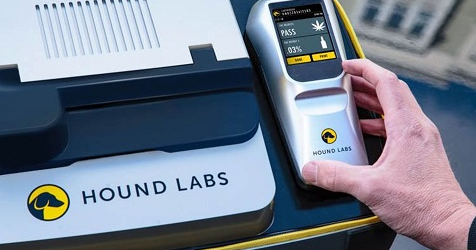California Company to Release Next-Generation Intoxication Analyzer by Year-End
Despite the fact that half of the states in the U.S. have, to some extent, legalized or decriminalized personal use of marijuana, police in these regions continue to fine and detain people on the roads, accusing drivers of being under the influence of marijuana. Unfortunately, unlike the well-established national standards and technological devices for alcohol testing, each state sets its own rules regarding the permissible concentration of cannabinoid metabolites in the blood. Moreover, current police technologies are still unable to accurately determine the level of intoxication of a stopped driver, mostly just detecting certain concentrations of cannabinoid breakdown products, many of which can accumulate in the body over long periods of time.
It’s clear that the old tests, which simply detected the presence of cannabinoids in a suspect’s blood, are no longer relevant, as they do not allow authorities to truly determine the degree of a driver’s intoxication. Nevertheless, in such cases, police tend to err on the side of detention and fines, to the misfortune of many honest recreational and medical marijuana users.
However, by the end of this year, the situation with marijuana testing for drivers may change dramatically. According to Mashable, a tech company from the San Francisco area called Hound Labs has announced that it will soon begin supplying law enforcement agencies across the country with a fundamentally new intoxication analyzer. This device is specifically designed to detect even the tiniest traces (down to a trillionth of a gram per liter of fluid) of cannabinoids in bodily fluids. The initial price of the innovative detector is expected to be $5,000 per unit.
According to the device’s creators, it will allow police officers and employers who test their employees for marijuana use to detect concentrations of cannabinoid metabolites in test subjects’ fluids that are characteristic of recent use (within 2-3 hours before the test). Thus, in addition to being able to detect cannabinoid metabolite concentrations with exceptional accuracy, the device will also be the first of its kind to establish the fact of recent marijuana use.
Recent Testing and Expert Opinions
Recently, Hound Labs conducted a practical test of the device involving 20 volunteers, some of whom consumed different types of marijuana with varying cannabinoid concentrations at different times before the test. According to company director Mike Lynn, “In the end, the device accurately identified the volunteers who had used marijuana, as well as the type of product they used, in just five minutes.”
Dr. Kara Lynch, a biology professor from the University of California, San Francisco laboratory who collaborated with the company’s team, noted that researchers could not afford a larger sample size due to limited resources. “I should note that, so far, this test involved the largest number of volunteers in the history of such device trials,” Dr. Lynch said. “However, this does not mean we shouldn’t conduct further tests to ensure the product is truly ready for the national market.”
Industry Concerns and Future Prospects
While activists and supporters of the legal marijuana industry are skeptical about the results of the new analyzer’s testing, some movement representatives also pointed out that the emergence of a reliable intoxication test on the market still does not solve the problem of the lack of unified national standards for marijuana intoxication.
“No matter how you look at it, this device essentially just establishes the fact of recent marijuana use. However, it still cannot determine the subjective degree of intoxication—that is, whether a person used marijuana for therapeutic or recreational purposes,” said Kyla Lee, a Canadian cannabis law attorney based in Vancouver. “Since authorities are unwilling to adopt precise, unified standards for determining marijuana intoxication, police will continue to detain and fine law-abiding therapeutic marijuana users simply because they fail the consumption test.”
Overall, Mr. Lynn hopes that final product testing will be completed within the next couple of months, allowing the company to launch the analyzer in the U.S., Canada, and other countries around the world.



